There are many varieties of Japanese flowers and each has its own deep, significant meaning. So, not only are Japanese flowers some of the most beautiful in the world but they are also given convey meaning and emotion.
Anywhere in the world, many people turn to flowers when they are looking to give a gift to a loved one. It does not matter whether that person is your family, partner, or family member, there is a type of flower that is appropriate for everyone.
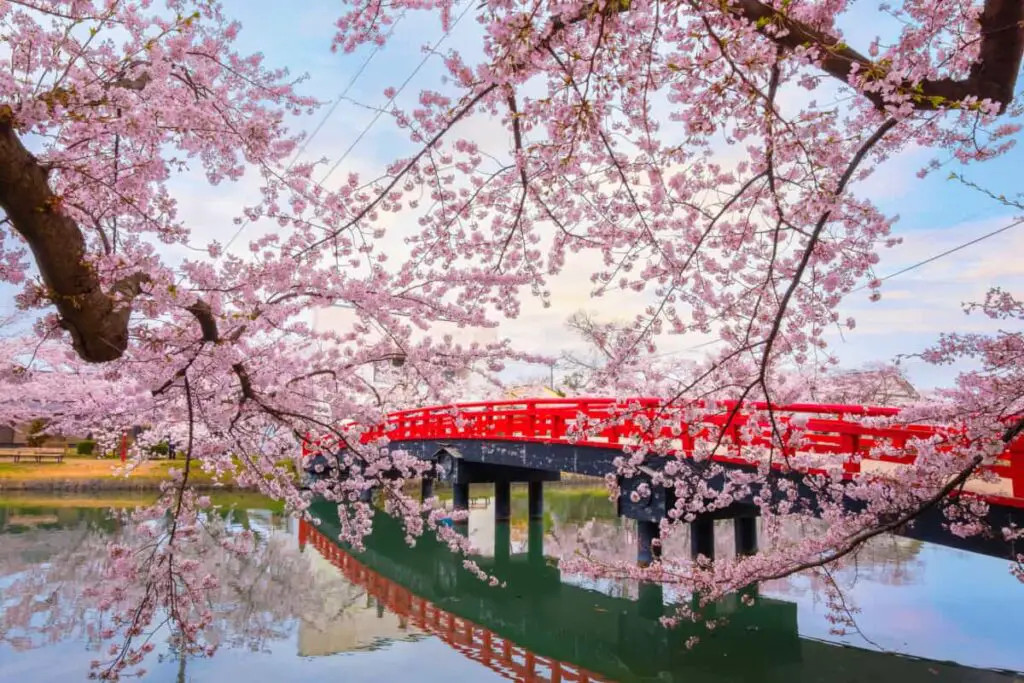
Some of the most beautiful flowers in the world originate in Japan and so if you wish to gift someone a slightly more unusual or uncommon flower, learning the meaning behind the Japanese flowers can help you to choose the most appropriate one. After all, you wouldn’t want to gift a red rose to someone who is just a friend.
So, in this article, we’ll tell you about a range of different Japanese flowers and their meaning and cultural significance.
Sunflowers (himawari)
Sunflowers are known around the world, but in Japan, there is a special variety. They are typically grown together in large fields and the flower is celebrated with the sunflower festival known as “himawari matsuri”.
The meaning behind the Japanese sunflower is loyalty, adoration, and longevity, making them the perfect gift to give to almost anyone that you know and admire.
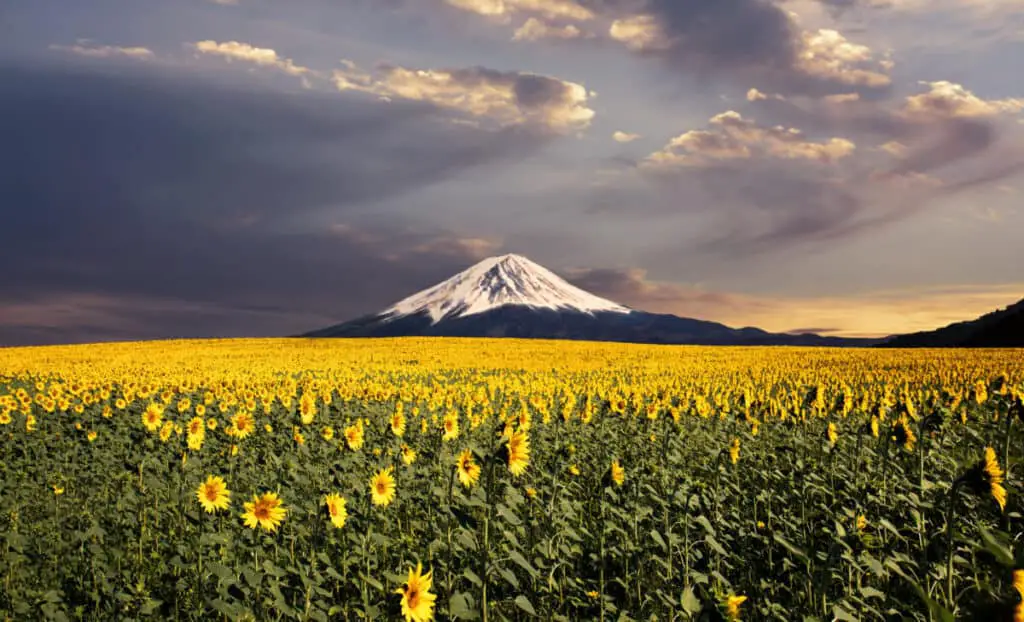
Lilies (yuri)
The Japanese lily is a stunning flower that comes in both bright pink, white and orange varieties. The meaning behind the flower changes depending on the color that you choose.
White lilies signify purity and innocence while red spider lilies represent a goodbye and orange means revenge and or hatred. So, when it comes to the Japanese lily choosing the right color is very important.
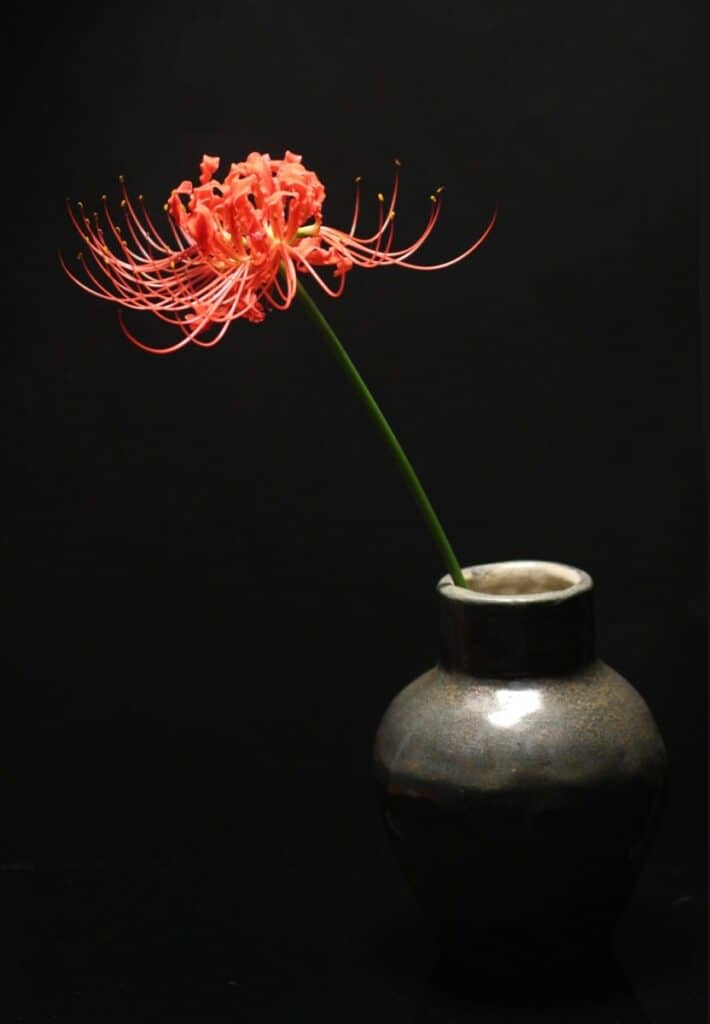
Camellia (tsubaki)
The camellia is a very complex-looking flower that is small in size and grows on bushes. The meaning behind this flower is pure love, humility, and discretion. The delicate look of the flower is reflected in its meaning.
This flower blooms in spring and can be found in southern Japan along the coast.
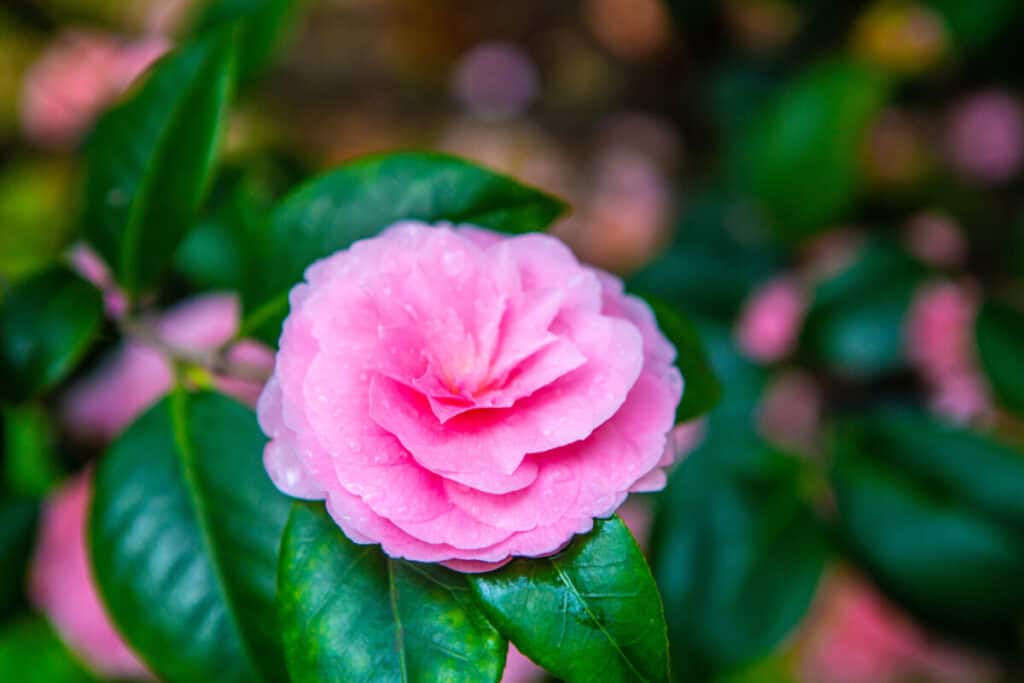
Cherry blossom (sakura)
The cherry blossom is perhaps the most widely known Japanese flower and many people travel from all over the world to see the cherry blossom tree in bloom in early spring in Japan. The cherry blossom is the national flower of Japan.
Perhaps less commonly known is the meaning behind the cherry blossom which signifies hope and rebirth. In addition to this cherry blossoms represent the short span of life due to the fact that they only bloom for a short period of time in the spring.
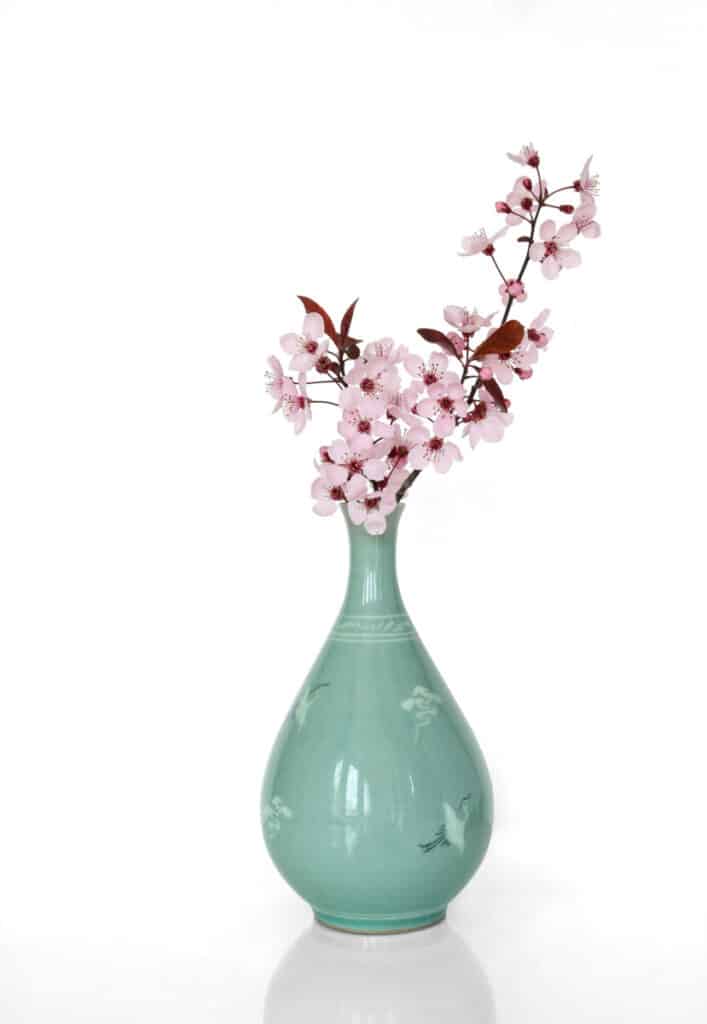
Japanese apricot (ume)
A delicate flower found on apricot trees this flower smells of honey and is very fragrant. The buds of the apricot tree flowers change from a deep pink color to a very pale pink when in full bloom.
The feminine look of the apricot tree flower is reflected in its meaning which is purity, faith, and elegance. They make a great gift to give to loved ones they are also suitable to be used as bonsai.
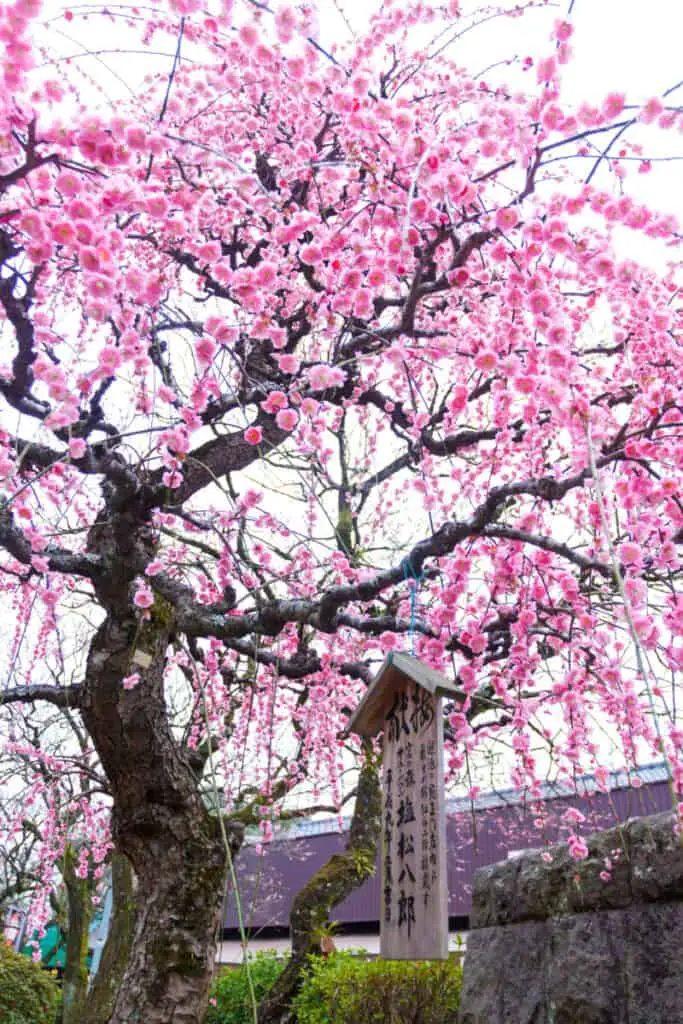
Japanese primrose (sakurasou)
The Japanese primrose is a dark purple color and makes a great gift to give to a loved one as it symbolizes long-lasting love. The Japanese primrose gets its name (sakurasou) as it appears similar in appearance to the cherry blossom.
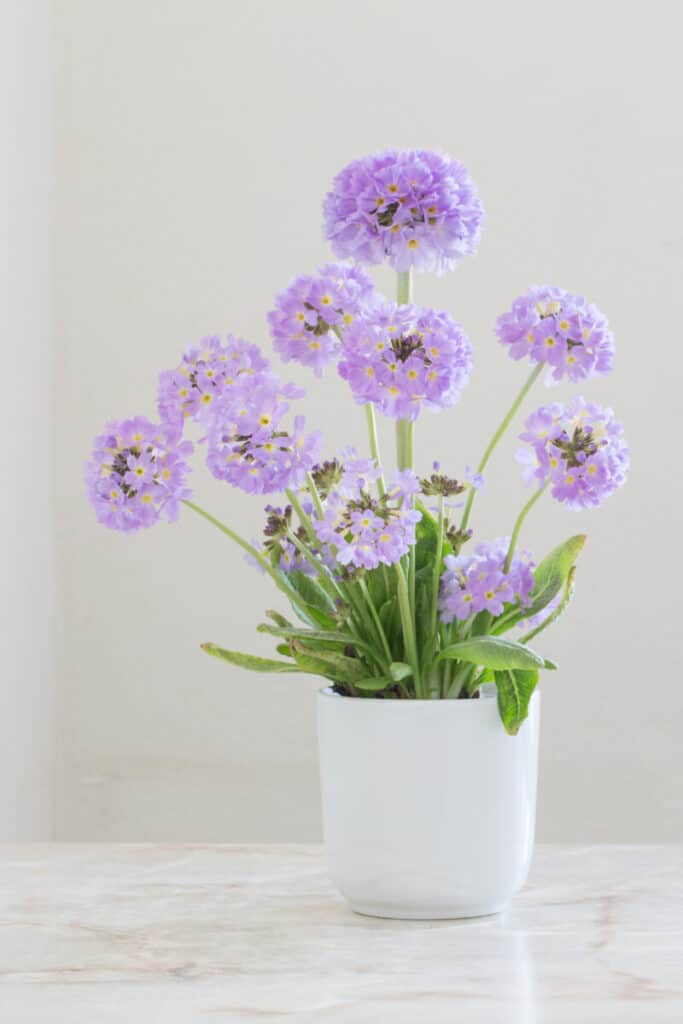
Carnation (kaneshon)
In Japan, you can either get carnations in their natural bright pink color or you can buy them dyed in a wide variety of colors. They are often given as gifts to partners or family members as they signify love.
Carnations grow very close together, signifying the closeness of the bond that they represent.
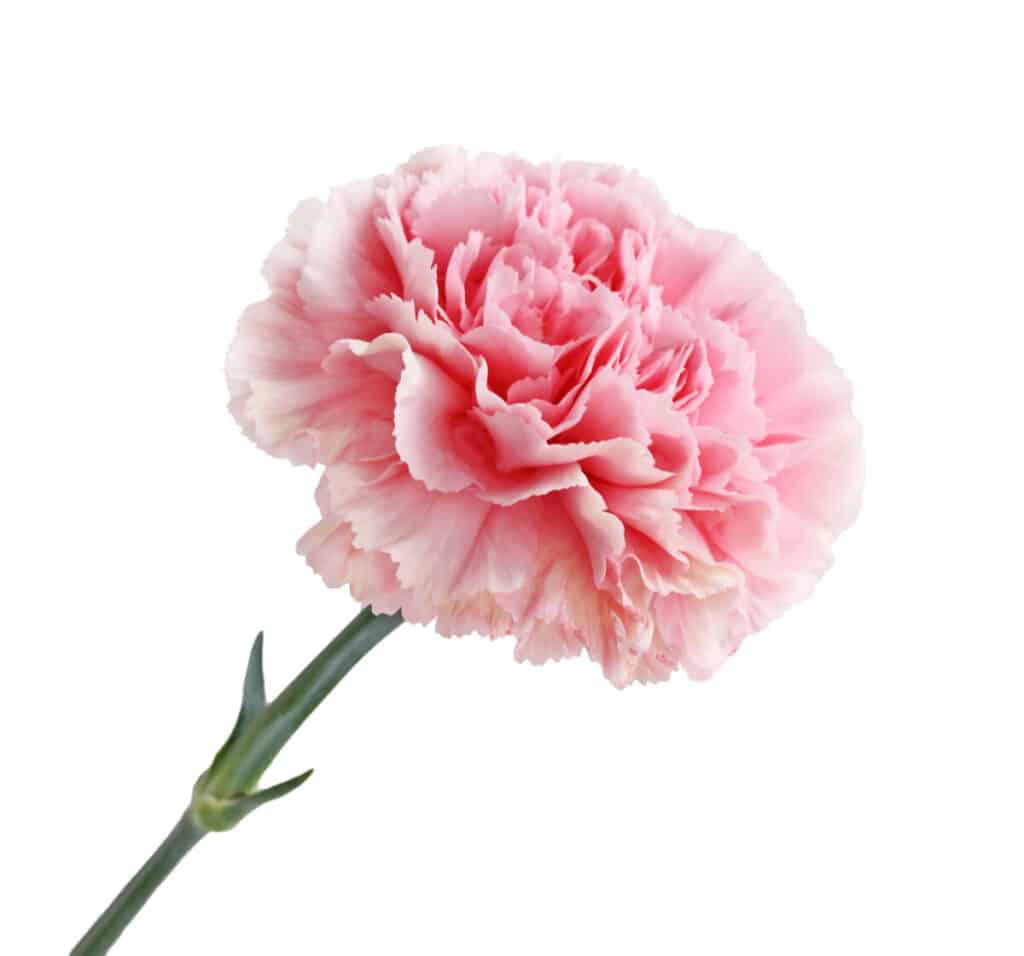
Hydrangea (ajisai)
Be careful when offering anyone a hydrangea as a gift as they may think that you have done something to offend them. After all, hydrangeas represent apologies, but they also represent gratitude. So, they also make great thank you gifts.
If you are choosing to give someone a hydrangea you may want to make sure that the context is clear. The hydrangea flowers change color according to the type of soil that they are planted in and can range from white to pink and blue.
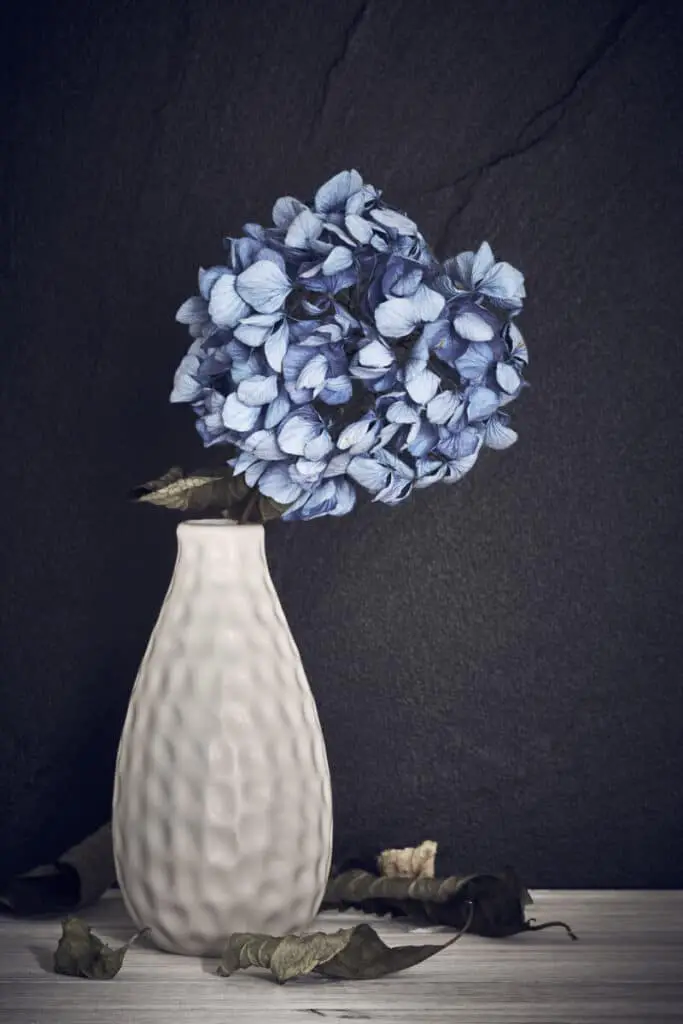
Morning glory (asagao)
The morning glory flower is a small trumpet-shaped flower that blooms for only a very short period of time. In Japanese culture, this particular flower signifies fleeting love. However, the plant can also mean the opposite of this, meaning a long-lasting love, as the plant blooms continuously for a long period of time from spring until fall.
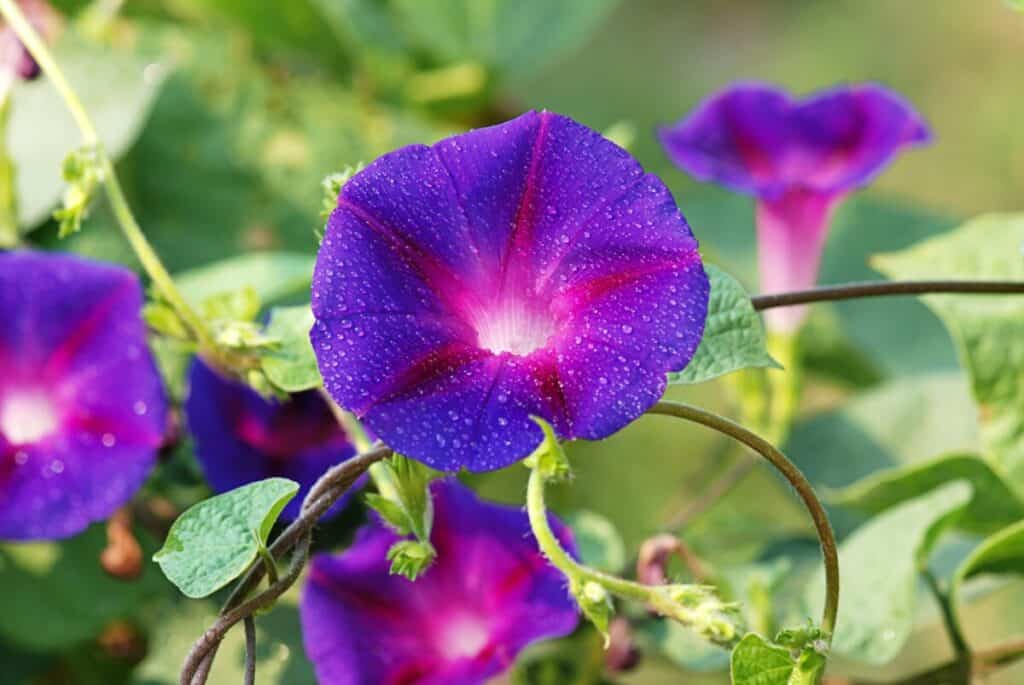
Peach tree blossom (momo)
The peach tree blossom flower is a delicate pink-white flower that blooms in late March. The flowers represent a fascinating person and a good personality and are commonly associated with the celebration of girl’s day in Japan (Hina matsuri).
The peach tree blossom is also seen as a form of protection as it is culturally and traditionally believed to protect people from evil spirits.
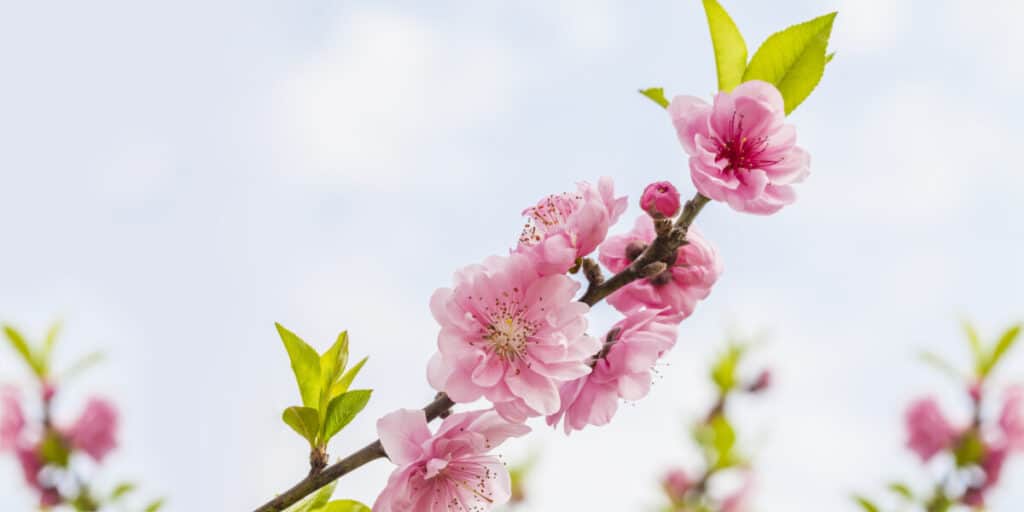
Iris (shobu)
The iris is a slender purple flower with bright yellow patches at its center. The flower itself has three main petals that droop downward and are commonly found to bloom in the spring.
The iris is said to bring good news, loyalty, and general good tidings. So, if you are in need of a little pick-me-up in your life, or you know of someone who does, then the iris can make the perfect gift to both show them that you are thinking of them and to hopefully bring them some good luck.
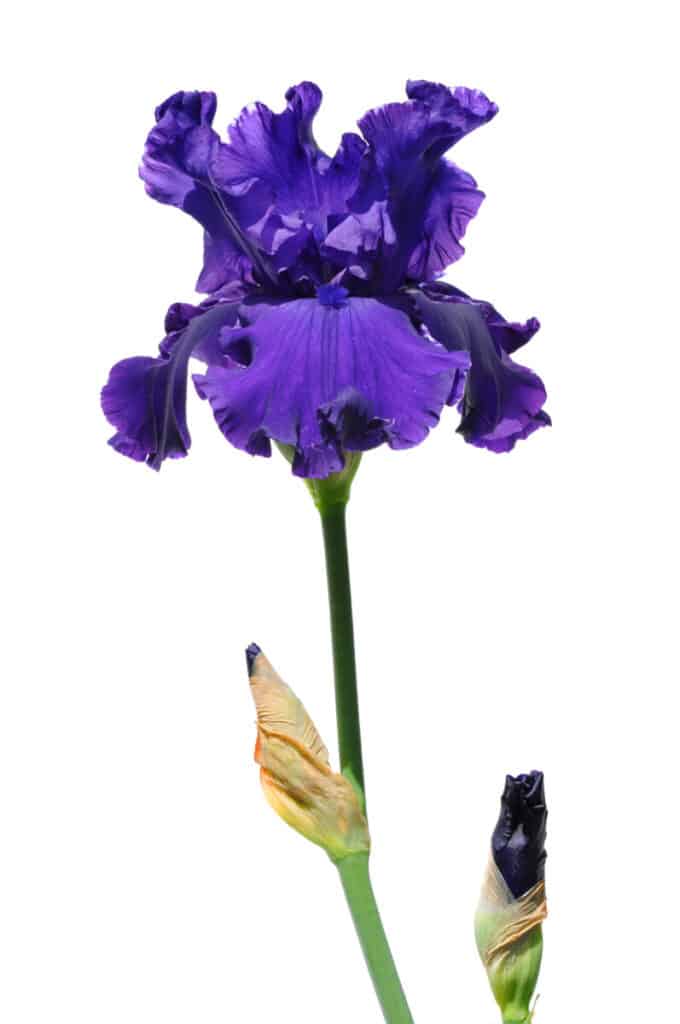
Magnolia (magunoria)
The magnolia flower is stark white in its coloring and in Japanese culture it signifies natural beauty. The pure white color of the flowers lends itself to the meaning of purity and cleanliness encapsulated in the representation of “natural beauty”.
Although there are a few different varieties of magnolia in Japan the most common is the star magnolia (also known as the shidekobushi.
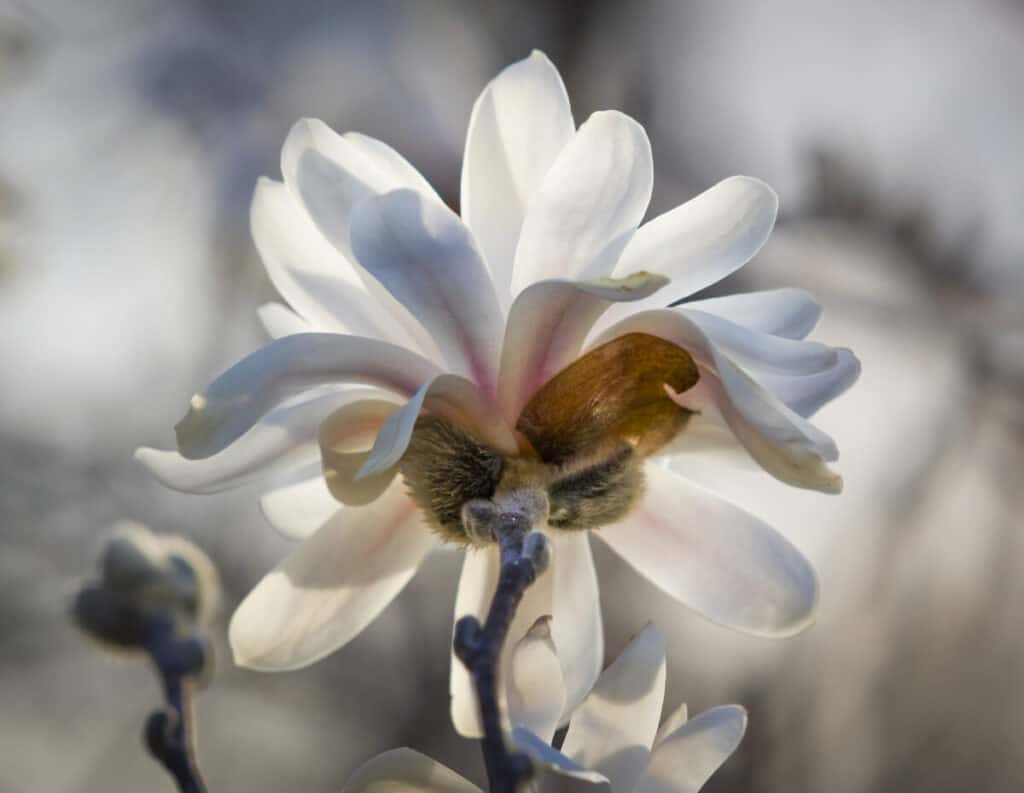
Lotus (renge)
The lotus flower is commonly associated with the East. The flower signifies that you are separated from a loved one and is commonly added to bouquets to signify love and purity.
These flowers are often found in ponds and are connected to the pond’s bed by a long stem.
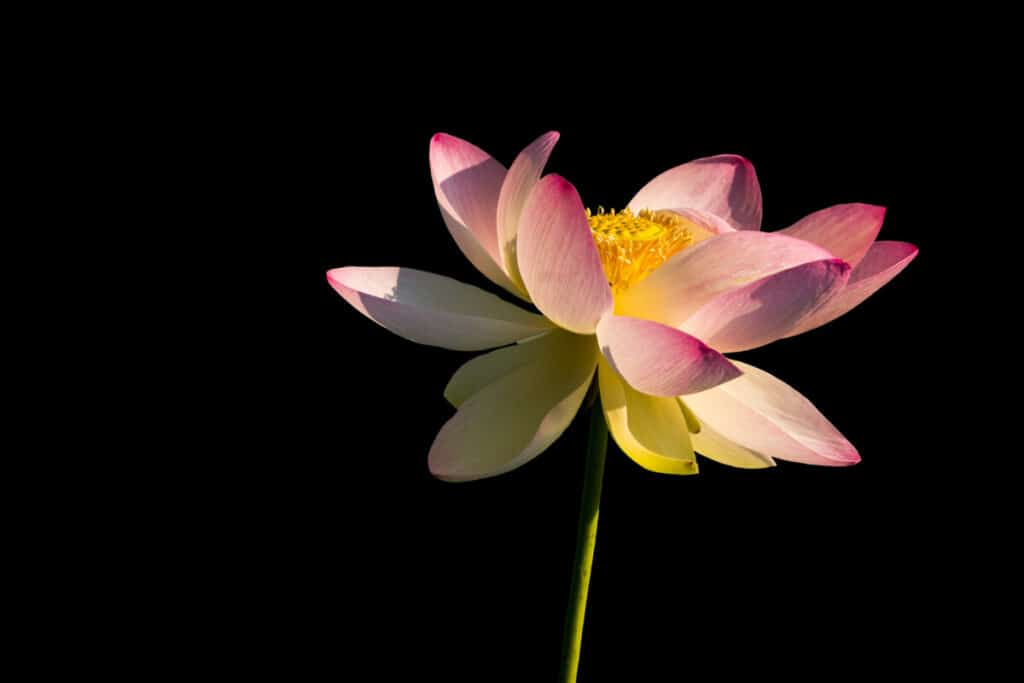
Final Thoughts
There are many different types of flowers available in Japan, both those native to the country and those native to the West. However, across cultures, the meaning of flowers can change and the significance of one particular flower in the west does not necessarily correlate to the meaning in Japanese culture.
In Japan, flowers have strong connections to their meanings and some are very well known. For that reason, it is important that you understand the meaning behind a flower before you gift it to someone.
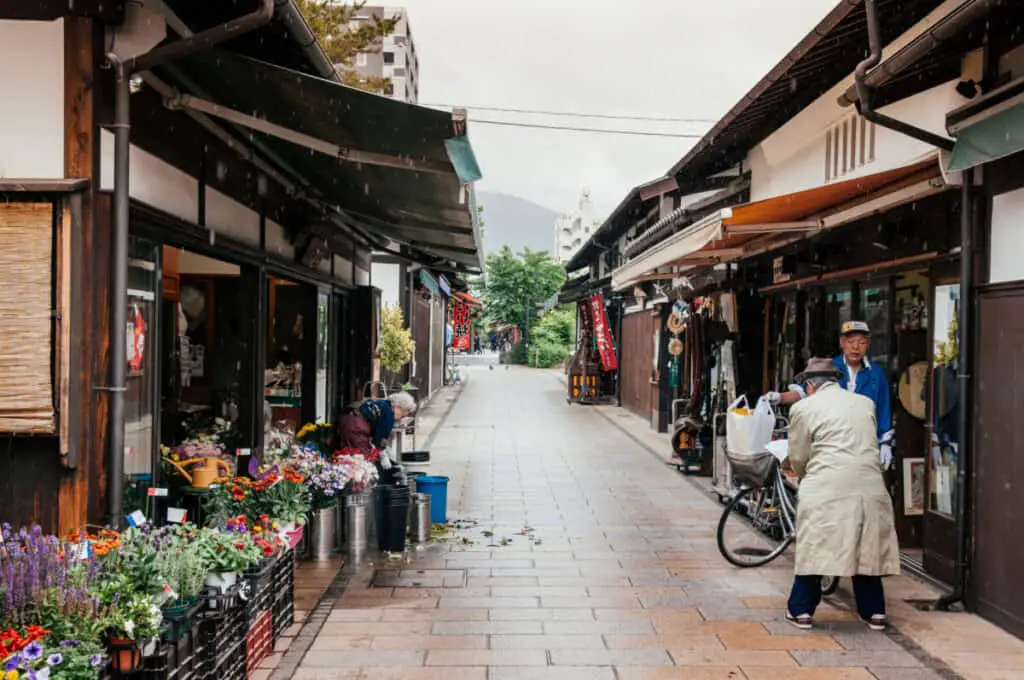
This way you can ensure that not only are you going to brighten up someone’s day by giving them flowers but also that you are conveying the right message.
Ikebana (Japanese flower arranging)
You can also choose to wish certain things into your life by placing flowers around your home. Such examples can include good luck, financial fortune, or even a rekindled relationship. Each flower has its own special meaning and it can be used with other types of flowers to hopefully bring everything that you need into your life.
Wikipedia Article with a myriad of flowers and brief meaning









